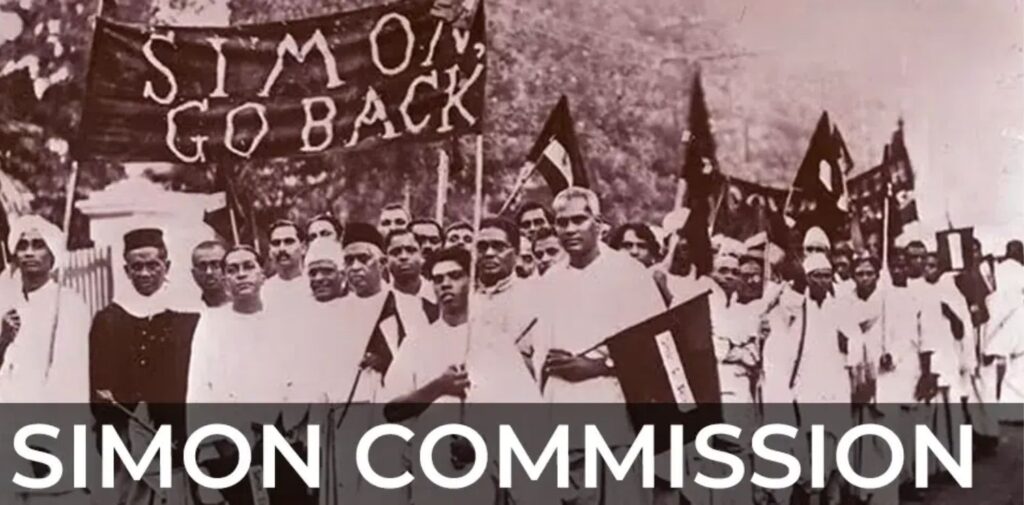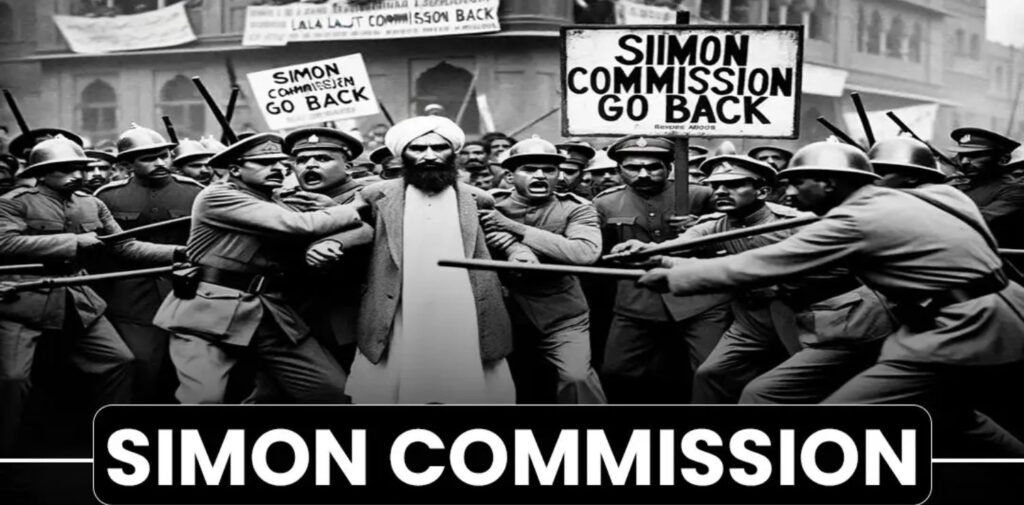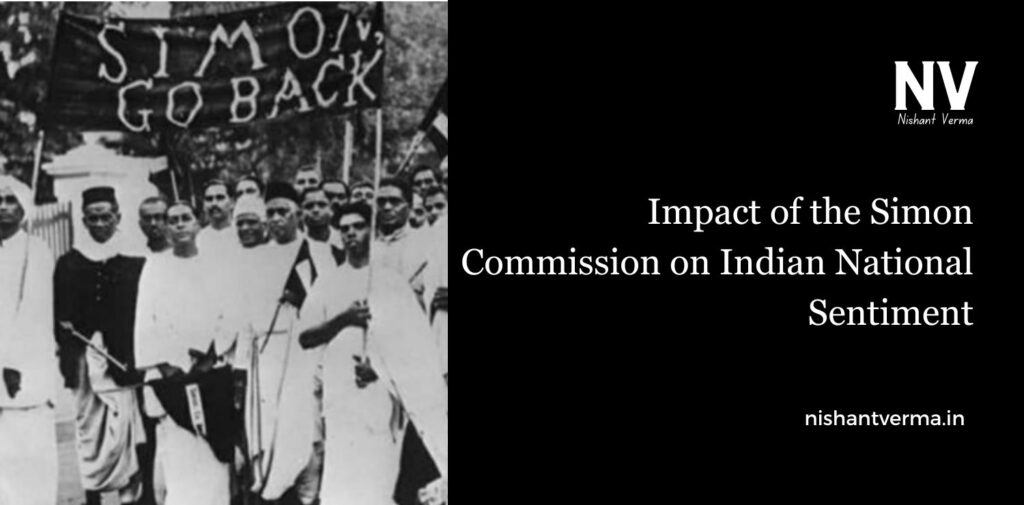The Simon Commission is an important chapter in India’s struggle for independence. It stirred deep feelings among Indians and played a major role in the fight for freedom from British rule. But what exactly was the Simon Commission, and why did it have such a big impact on Indian national sentiment? In this article, we will explore the story of the Simon Commission, its background, and how it affected the people of India, in simple words that everyone can understand.
What Was the Simon Commission?
The Simon Commission was set up by the British government in 1927. Its purpose was to review and suggest changes to the Government of India Act of 1919. This was a law made by the British to govern India, but it did not give Indians much power. The Simon Commission was supposed to assess how well the law was working and recommend changes to it.
But there was a big problem with this commission. The British government did not include any Indian members in the commission. All the members of the Simon Commission were British. This made Indians very angry. They felt that they were being ignored and that the British were deciding their future without asking for their opinions.

The Reaction of Indians to the Simon Commission
When the Simon Commission was announced, Indians were already unhappy with British rule. They wanted more control over their own country, and they were demanding full independence. The Commission made things worse because it showed that the British did not trust Indians to make decisions about their own country.
As soon as the Simon Commission arrived in India in 1928, protests broke out across the country. People were upset that no Indian was included in the commission, and they started to demand a greater say in the future of India.
One of the most famous protests was led by Lala Lajpat Rai, a well-known freedom fighter. He and many others protested against the commission in Lahore. The police, under the command of a British officer named James A. Scott, used brutal force to stop the protesters. Lala Lajpat Rai was severely beaten, and he later died from his injuries. His death made the protests even more intense. People were filled with anger and sorrow, but this also made them more determined to fight for independence.

The Simon Commission and the Rise of Nationalism
The Simon Commission had a powerful impact on Indian national sentiment. Even though it was meant to review laws and policies, it turned out to be a turning point in the Indian freedom struggle. It united people across the country and gave a new energy to the movement for independence.
- A Common Cause for Unity: The Commission became a symbol of British injustice. People from all walks of life—students, workers, leaders, and common men—came together to protest against it. This unity helped strengthen the feeling of nationalism in India. People were no longer willing to quietly accept British rule. They wanted to stand up and fight for their rights.
- The Role of Young People: One of the most important effects of the Simon Commission was how it brought young people into the freedom struggle. Before this time, many young Indians were not fully involved in the independence movement. But the brutal treatment of peaceful protesters, like Lala Lajpat Rai, shocked them and made them realize how serious the fight for independence was. Young leaders, such as Subhas Chandra Bose and Jawaharlal Nehru, gained a lot of support during this time.
- The Growing Anger Against British Rule: The Commission also made many Indians feel that they could no longer trust the British to make decisions about their future. They realized that the British were not interested in giving them freedom or treating them fairly. This anger led to greater demand for self-rule and independence. The slogan “Simon Go Back” became popular, and people began to see the need for a complete break from British rule.
- The Formation of New Political Movements: The protests against the Simon Commission helped bring together different political groups in India. Although the Congress Party and the Muslim League were the two main political parties at the time, the Commission led to the rise of more radical groups. For example, the Hindustan Socialist Republican Association (HSRA), led by Bhagat Singh and others, gained popularity. These radical groups began to advocate for more direct action against the British.

The Simon Commission’s Legacy
Even though the Simon Commission did not bring about any immediate changes to Indian politics, its impact was long-lasting. It made many Indians realize that they could no longer wait for the British to give them freedom. They had to fight for it.
- Increase in National Pride: The protests and the anger that followed the Simon Commission gave birth to a new sense of national pride. Indians began to feel that their country was worth fighting for, and they wanted to take charge of their own destiny. The Simon Commission became a symbol of the fight against foreign rule.
- The Growth of Mass Movements: After the Simon Commission protests, mass movements against British rule began to spread more quickly. The Congress Party, under the leadership of Jawaharlal Nehru and others, called for larger protests and a non-cooperation movement. The Simon helped bring more and more people into the struggle for independence, from all sections of society.
- The Influence on Later Struggles: The Commission protests set the stage for many important events in India’s journey to independence. It inspired leaders like Subhas Chandra Bose, who believed that armed struggle was necessary to achieve freedom. It also influenced the Quit India Movement of 1942, when Mahatma Gandhi and others called for the immediate departure of the British from India.
Conclusion
The Simon Commission was not just an event in India’s history. It was a catalyst that sparked anger, unity, and a stronger desire for independence. Though the British had no intention of giving India its freedom through the commission, it led to a powerful awakening among Indians. The protests against the Commission marked a key moment in India’s journey towards independence.
From young students to older leaders, from the cities to the villages, the Simon Commission made everyone realize that they could no longer stay silent in the face of British injustice. The sacrifices of people like Lala Lajpat Rai, who gave their lives for India’s freedom, inspired future generations to continue the fight. The Commission, in the end, helped push India closer to the moment when it would finally become an independent nation in 1947.
So, the next time you hear about the Simon Commission, remember that it was more than just a commission—it was a spark that ignited the fire of India’s fight for freedom.




